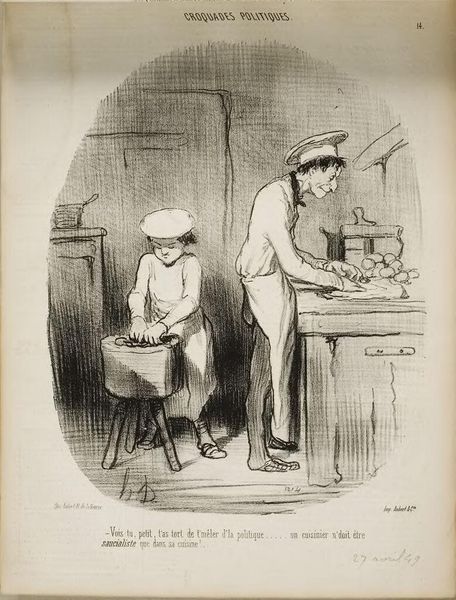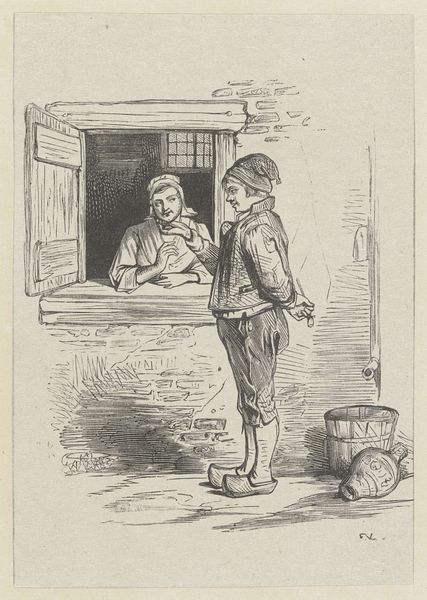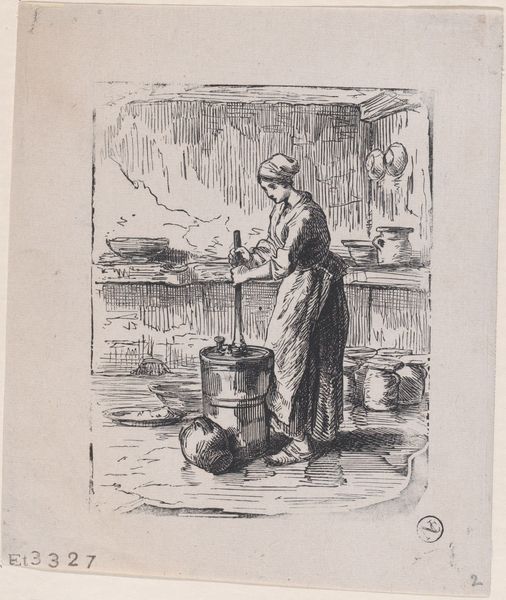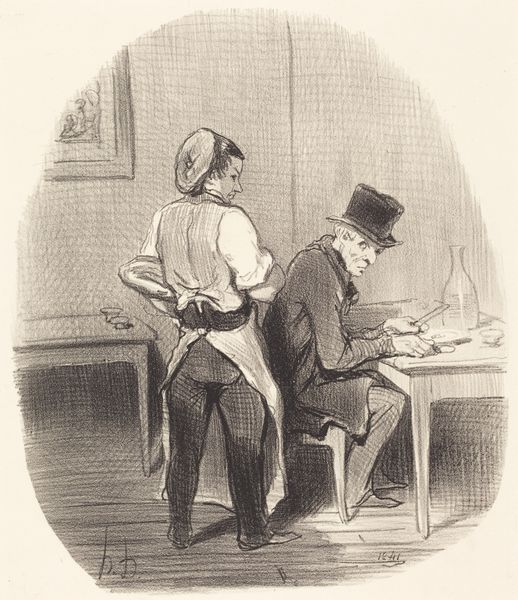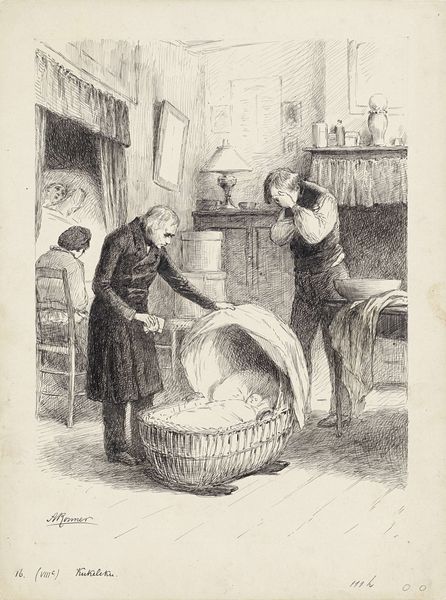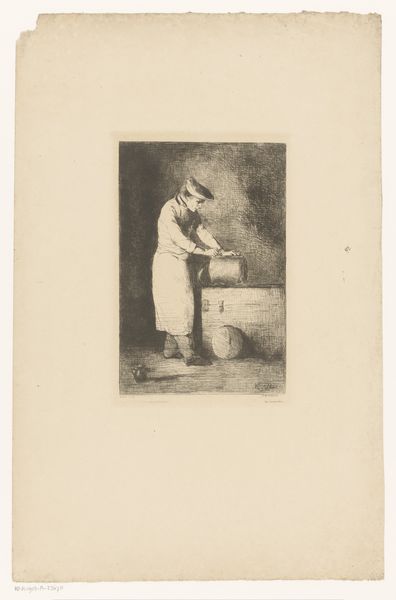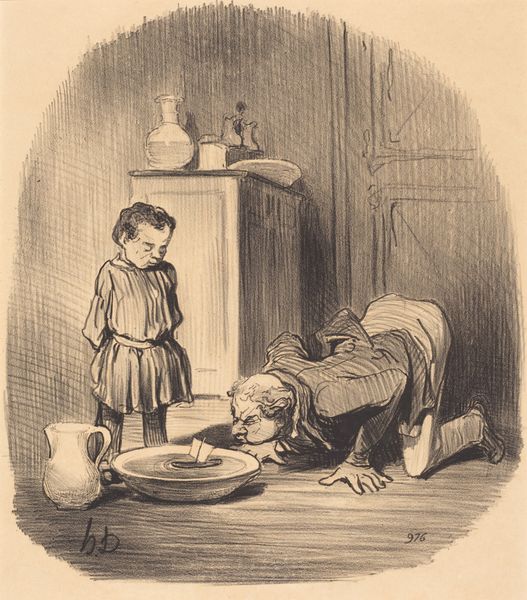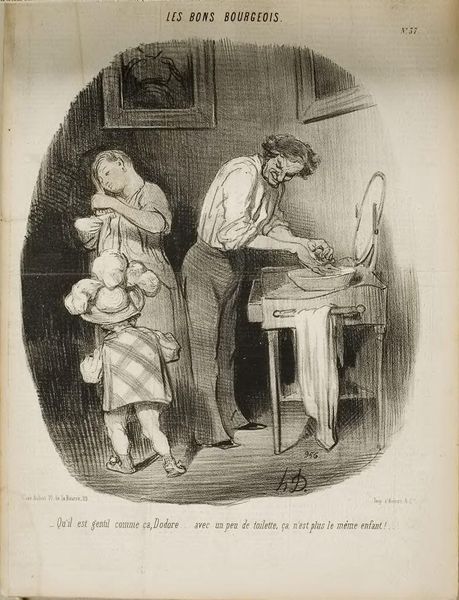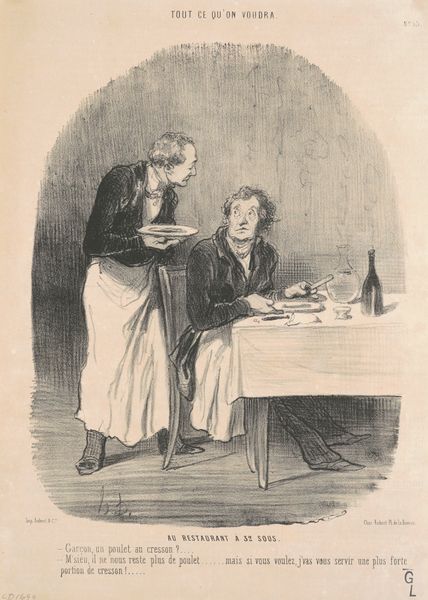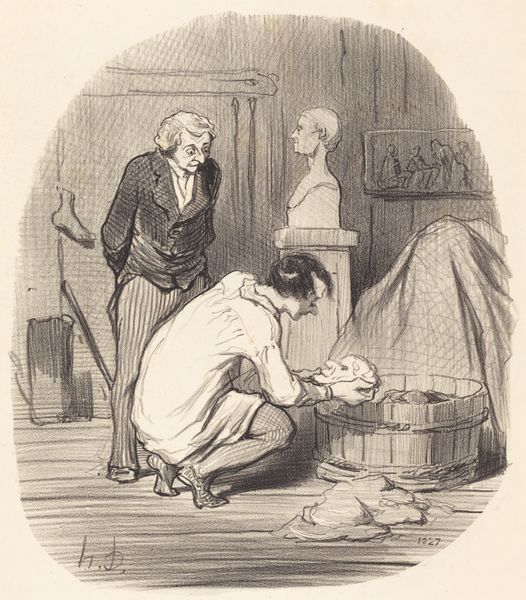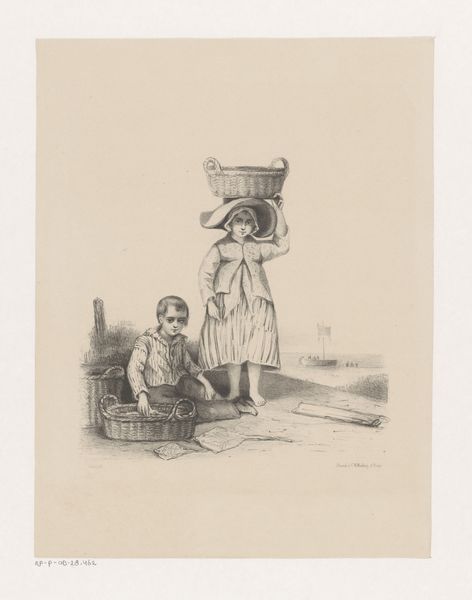
drawing, lithograph, print
#
drawing
#
lithograph
# print
#
caricature
#
caricature
#
figuration
#
romanticism
#
genre-painting
Copyright: National Gallery of Art: CC0 1.0
Editor: This is Honoré Daumier's lithograph, "Vois-tu petit, t'as tort...", created in 1849. The contrast between the light figures and the dark background gives it an almost theatrical mood. What elements of the composition strike you most powerfully? Curator: The strategic deployment of line dominates. Notice the relentless hatching that defines depth and form, particularly in the background. Daumier has also chosen to render these figures through exaggerated form, thereby emphasizing an inherent lack of symmetry that can imply psychological themes of stress and weariness. How does the artist's approach to shading contribute to this reading, in your view? Editor: I think the heavy shading really amplifies the intensity of labor. Also, their simple clothing really makes the environment relatable despite being historical. With Daumier being associated with Romanticism, should we read the lack of vibrant colour or refined polish here in symbolic terms, or just see them as aspects of his artistic expression through graphic art? Curator: Consider that Romanticism embraced emotion and individual experience above all else. Colour would serve only to distract, therefore its absense can amplify form. Rather, the lack of embellishment emphasizes a gritty reality. Daumier’s conscious decision to prioritize the intrinsic structure through hatching—and form through caricature, not perfect resemblance—lends to a more powerful statement about the lives represented. This simplicity allows us, as the audience, to experience its content unfiltered. Do you find it effective? Editor: I absolutely do, the strong lines contribute to its message. The choice to leave so much up to the imagination creates greater room for interpretation! I hadn’t really noticed this. Thanks for sharing. Curator: It's been a pleasure. Examining art this way, parsing the structural elements to understand artistic intent, truly unveils a richer dimension of meaning.
Comments
No comments
Be the first to comment and join the conversation on the ultimate creative platform.
